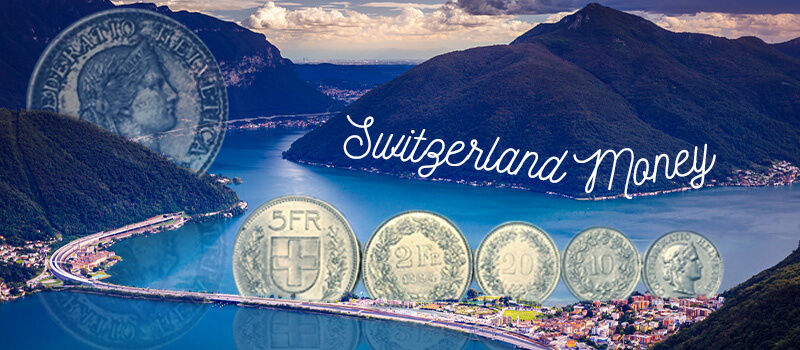
The History of Switzerland Coins
By: Adhitri Sethuraghavan
In this article, I would like to share about the currency and numismatics in Switzerland, so, let us start to learn!
The official currency of Switzerland is called the Swiss franc. One Swiss franc equals 100 rappen (like U.S. cents). The four national languages in Switzerland are German, French, Italian and Romansh. Rappen is the name of the unit in German-speaking Switzerland. The same unit is called cetimes in the part of Switzerland that has speakers of French, for centimes is a French word. The unit is called centesimo in Italian-speaking Switzerland. Rappen is the name preferred in the numismatic community. As of May 2021, one Swiss franc is almost equal to 1.12 United States dollars.
History of Switzerland Coins
The initial series of modern coinage in Switzerland was minted in 1850 in nine different denominations. The 1 rappen and 2 rappen were made of bronze. The 2 rappen was removed from circulation in the year 1978, and later the 1 rappen was removed from circulation in the year 2007. Some of the older coins have collector value. In particular, the 1912 5 franc, 1896 silver coins, 1873 5 franc, 1857 2 franc are considered rare and of higher value.
The coins currently in circulation are 5 francs, 2 francs, 1 franc, 1/2 franc, 20 rappen and 10 rappen, all made of 75% copper and 25% nickel; and the 5 rappen, made of 92% copper, 6% aluminum and 2% nickel.
Considering the period prior to 1850, there were 10 denominations in the 1880s and 14 in the 1900s. There were also commemoratives, such as the 19th century Shooting Thalers. All the Shooting Thalers have a face value of 5 francs and were minted from 1855 to 1885. Shooting Thalers were minted to commemorate free shooting in Switzerland. Also, gold coinage existed, and these coins were 90% gold. The gold coinage is informally called Vreneli, which means “Bearer of Victory.”
The federal mint of Switzerland is in Bern and it started issuing coins in 1857. Hence, all the Swiss coins have a mintmark “B.” However, there used to be other mints used in the 1800s:
– Pessac, France
– Brussels, Belgium
– Strasbourg, France
– Solothurn, Switzerland
In 1850, Karl Friedrich Voigt came up with the reverse design of a wreath of grapes and oak leaves. Interestingly, this design is used to date. Swiss coins have the legend of either “HELVETIA” or “CONFŒDERATIO HELVETICA,” which is the Latin name of the Swiss Confederation, along with the year. The Swiss National Bank (SNB) is responsible for the circulation of coins to the public.
Numismatics in Switzerland
The Swiss Numismatic Society (SNG) was established in 1879 and is, in many ways, like our American Numismatic Association (ANA). The SNG is a non-profit organization which encouraged individuals, institutions and associations to get involved in numismatics for more than 125 years. It publishes two journals, the annual “Schweizerische Numismatic Rundschau,” and the quarterly “Schweizer Münzblätter,” with articles in four languages, including English. The Swiss Numismatic Society allows international members to join with a reduced price for Young Numismatists. There are several museums, such as the Swiss National Museum, that are displaying numismatic collections.
References:
http://www.numisuisse.org/
https://en.wikipedia.org/wiki/Coins_of_the_Swiss_franc
https://www.sammlungszentrum.ch/en/services/collection/numismatics